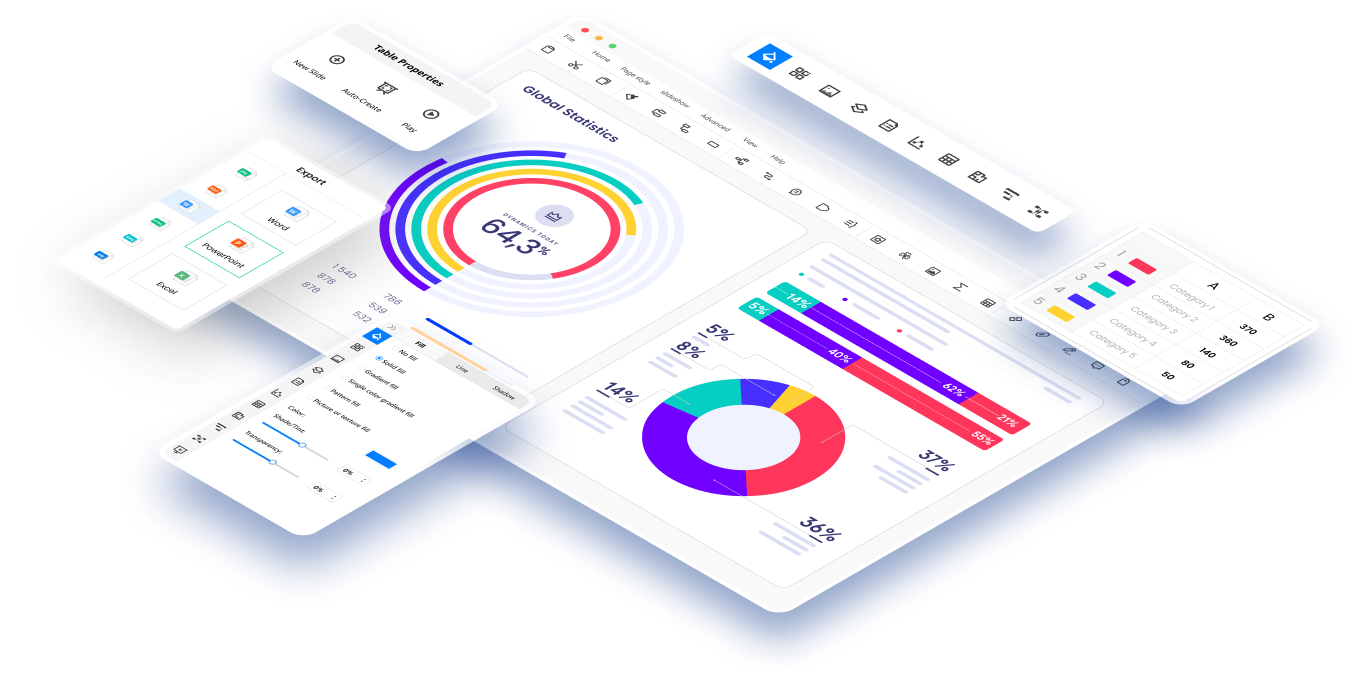Staying alert and avoiding fatigue is crucial in today's fast-paced workplaces, where high demands can drain employees and raise the chance of mistakes or accidents. This article looks at smart ways to manage fatigue risks, so companies can keep employees safe and productive even in stressful jobs. It goes into tactics like custom schedules and focused aid that have been proven to curb dangers from tiredness.
By putting these fatigue risk management strategies to work, organizations can keep their workforce healthy and doing their best, even in tougher, higher-pressure environments.
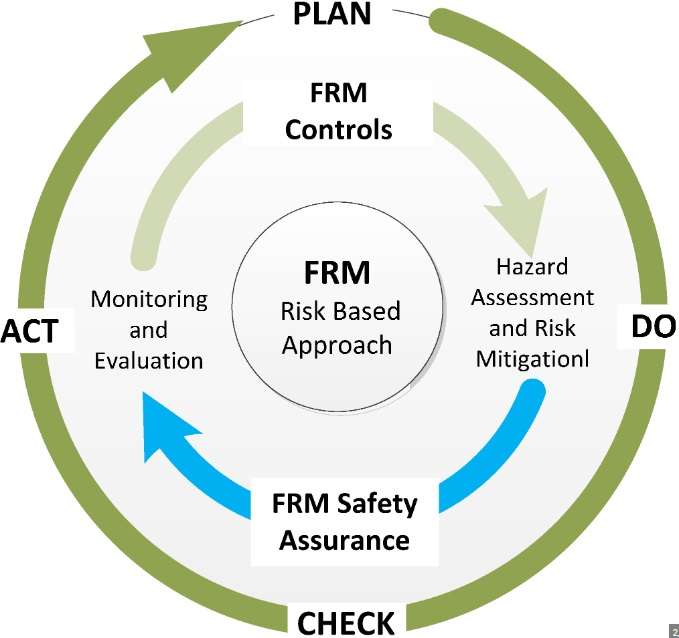
Fatigue risk management aims to avoid the dangers of tiredness at work. Being overly tired can lead to mistakes, lower productivity, and accidents. To manage fatigue risks, companies can adjust work schedules, rotate shifts wisely, make sure people get enough rest, train them on fatigue, and keep checking for problems. The goal is to keep workers alert so they stay safe and perform at their best.
In this article
Part 1. Navigating Fatigue Risks: Types of Fatigue Risks
In the realm of Fatigue Risk Management, various types of fatigue risks demand attention. These encompass:
- Acute Fatigue: Resulting from short-term sleep deprivation or extended wakefulness.
- Chronic Fatigue: Arising from prolonged, insufficient rest over an extended period.
- Circadian Rhythm Disruption: Disruptions to the body's natural sleep-wake cycle, common in shift work.
- Mental Fatigue: Cognitive exhaustion affecting decision-making and alertness.
- Physical Fatigue: Weakening of physical capabilities due to prolonged exertion.
Addressing these distinct fatigue risks is crucial for safeguarding both employee well-being and operational excellence.
Part 2. Challenges in Implementing Fatigue Risk Assessment
Implementing a robust Fatigue Risk Assessment process presents several challenges, each requiring careful consideration and mitigation strategies. These challenges include:
- Data Collection: Gather accurate and relevant data on employee work hours, sleep patterns, and tasks.
- Regulatory Compliance: Navigating and adhering to complex labor laws and regulations.
- Employee Buy-In: Encouraging staff to actively participate in the assessment process.
- Shift Scheduling: Designing schedules that minimize fatigue risks.
- Monitoring and Adjustment: Ensuring ongoing assessment and adaptation of fatigue risk mitigation strategies.
Successfully addressing these challenges is essential for effective Fatigue Risk Management in any organization.
Part 3. Best Strategies for Fatigue Risk Management System
In demanding industries, implementing effective Fatigue Risk Management is paramount. To navigate this critical aspect, consider the following strategies:
- Prioritize Adequate Rest: Ensure sufficient sleep and recovery time for employees.
- Implement Regular Breaks: Schedule frequent, short breaks to alleviate mental and physical fatigue.
- Utilize Rotational Shifts: Design shifts that rotate to prevent prolonged exposure to high-fatigue periods.
- Provide Training and Education: Equip employees with the knowledge to recognize and address fatigue risks.
- Leverage Technology: Employ tools for scheduling optimization and fatigue monitoring.
These strategies collectively fortify a comprehensive Fatigue Risk Management System, fostering a safer and more productive work environment.
Part 4. Creating a Risk Management Diagram Using EdrawMax
Creating clear visuals is vital for managing risks effectively. EdrawMax makes this easy with its user-friendly design software. The extensive library of templates and symbols helps professionals build detailed risk diagrams with no hassle.
EdrawMax has great features for risk mapping. You can pick from many customizable shapes to show different risks and solutions. The simple drag-and-drop function makes it a breeze to connect elements and organize the flow. Teams can even collaborate in real time for a coordinated process.
With EdrawMax, organizations can visualize risks systematically. This leads to stronger plans for avoiding pitfalls and resilience in the face of uncertainties. The software is an invaluable tool for expert risk management.
Here are the steps to create a simple risk management process diagram using EdrawMax:
Step 1: Open the EdrawMax application on your computer and select "Risk Management" from the template categories. Browse through the available risk management templates and select one that aligns with your specific needs. EdrawMax offers a range of pre-designed templates for various industries and purposes.

Step 2: Once you've chosen a template, you can customize it to suit your specific risk management scenario. This may involve editing text, changing shapes, or adding/removing elements as needed.
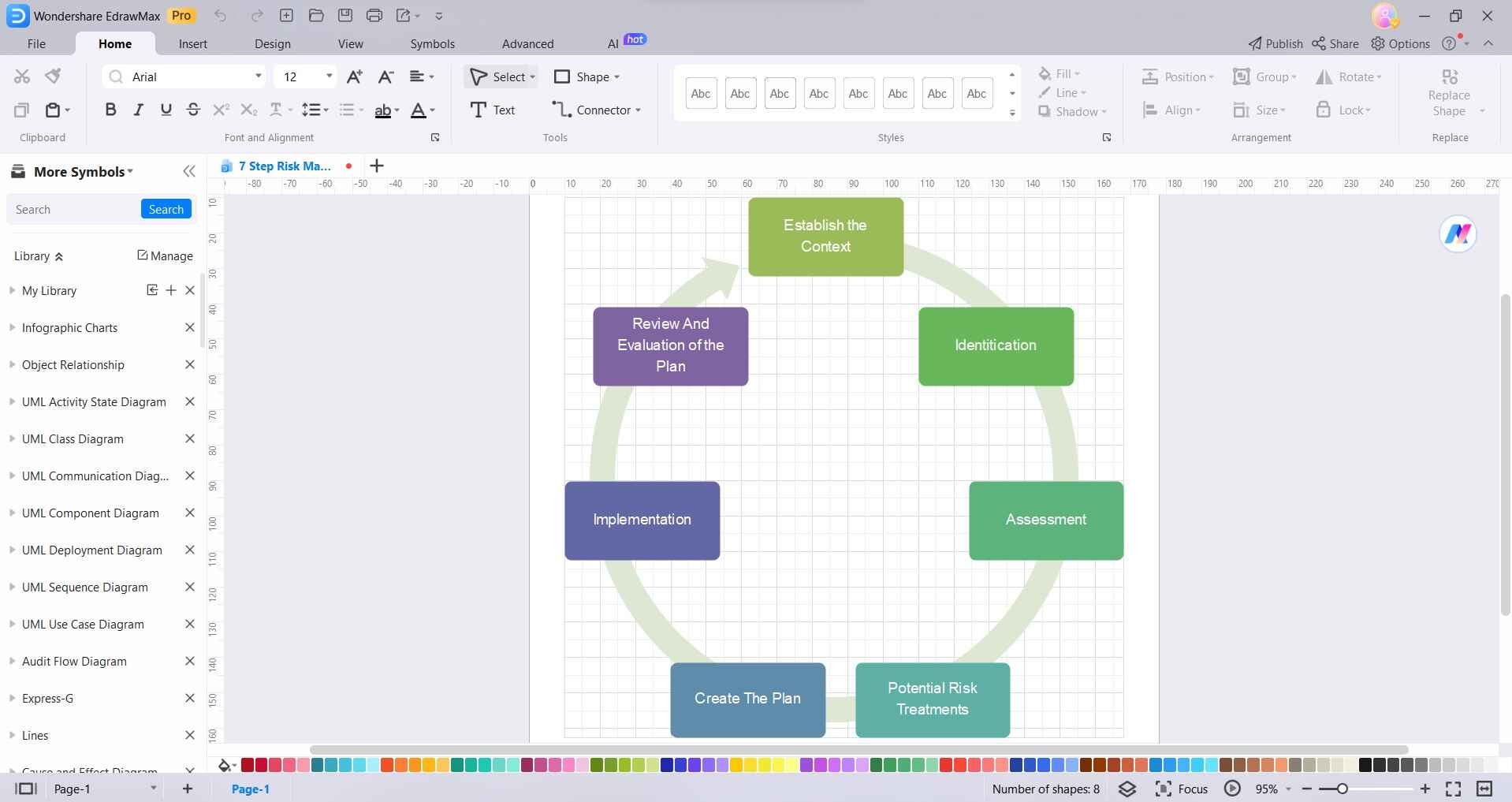
Step 3: From the left sidebar, use connectors or lines to visually link the risk factors to their corresponding mitigation strategies. This helps to indicate the relationship between them.
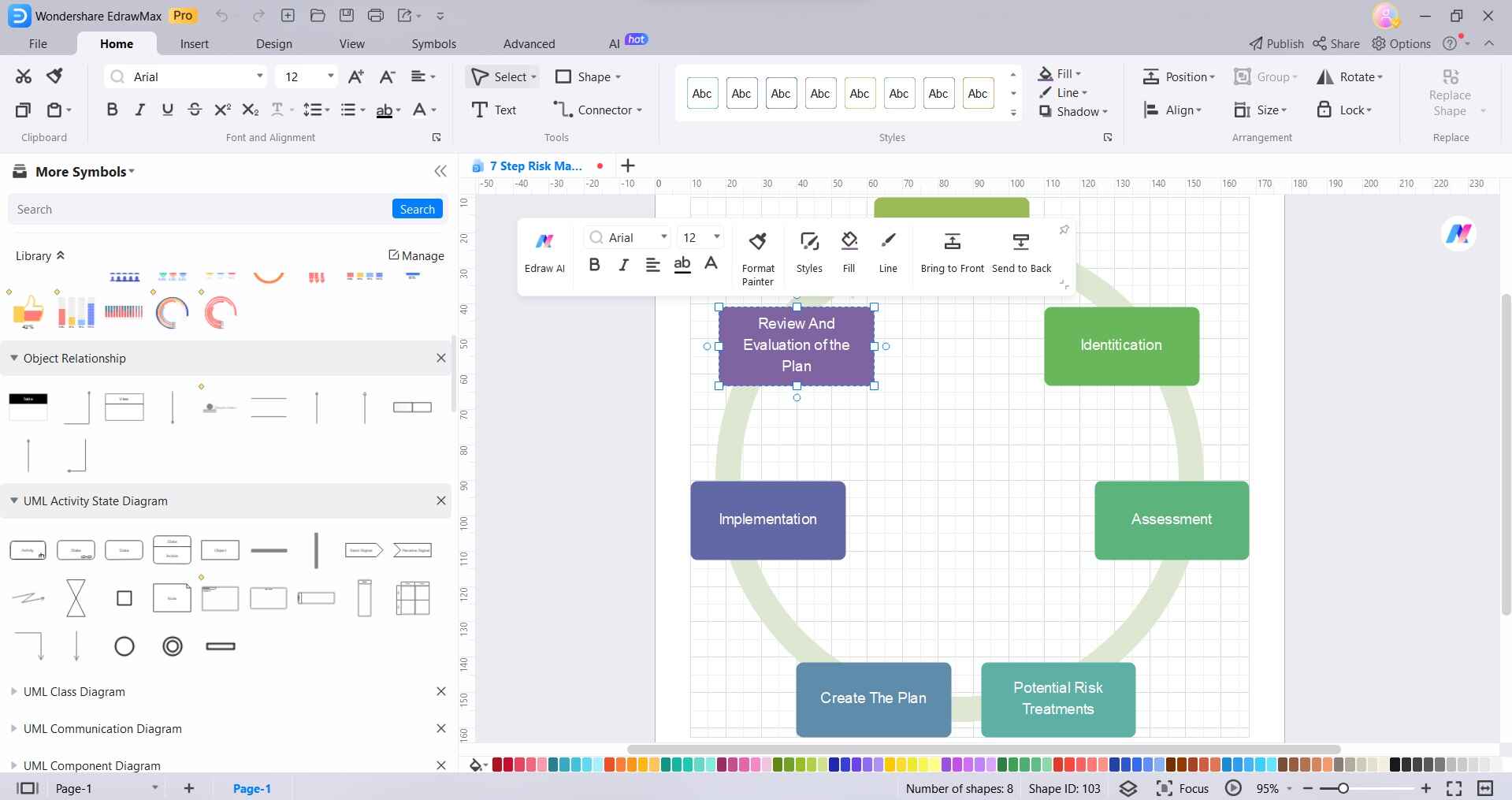
Step 4: Apply colors, fonts, and formatting options to enhance the visual appeal and clarity of your risk management diagram.
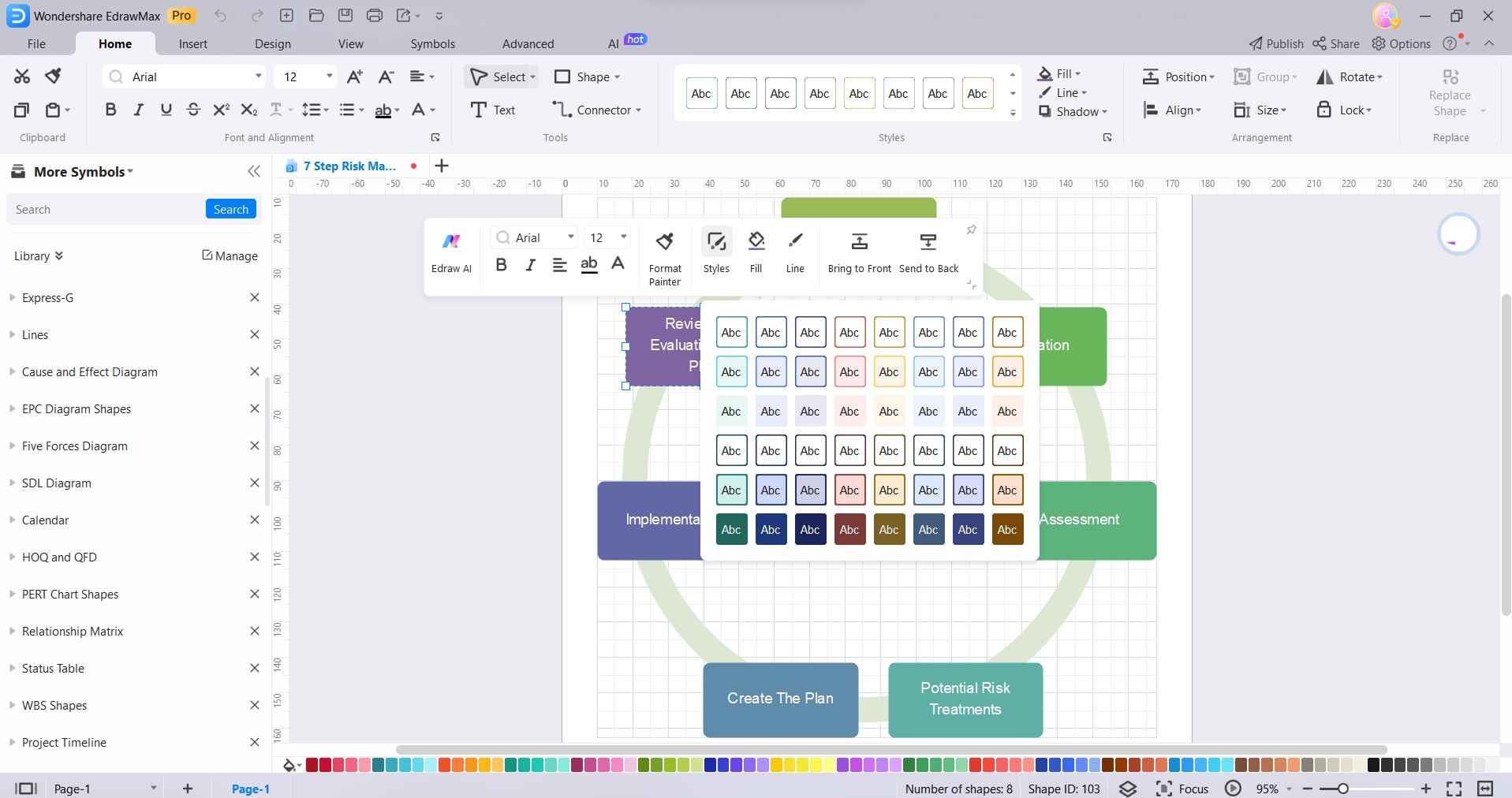
Step 5: Once you're satisfied with your risk management diagram, head to File> Save to save the diagram in your preferred format (such as PNG, JPEG, or PDF) and store it in a location where it's easily accessible.
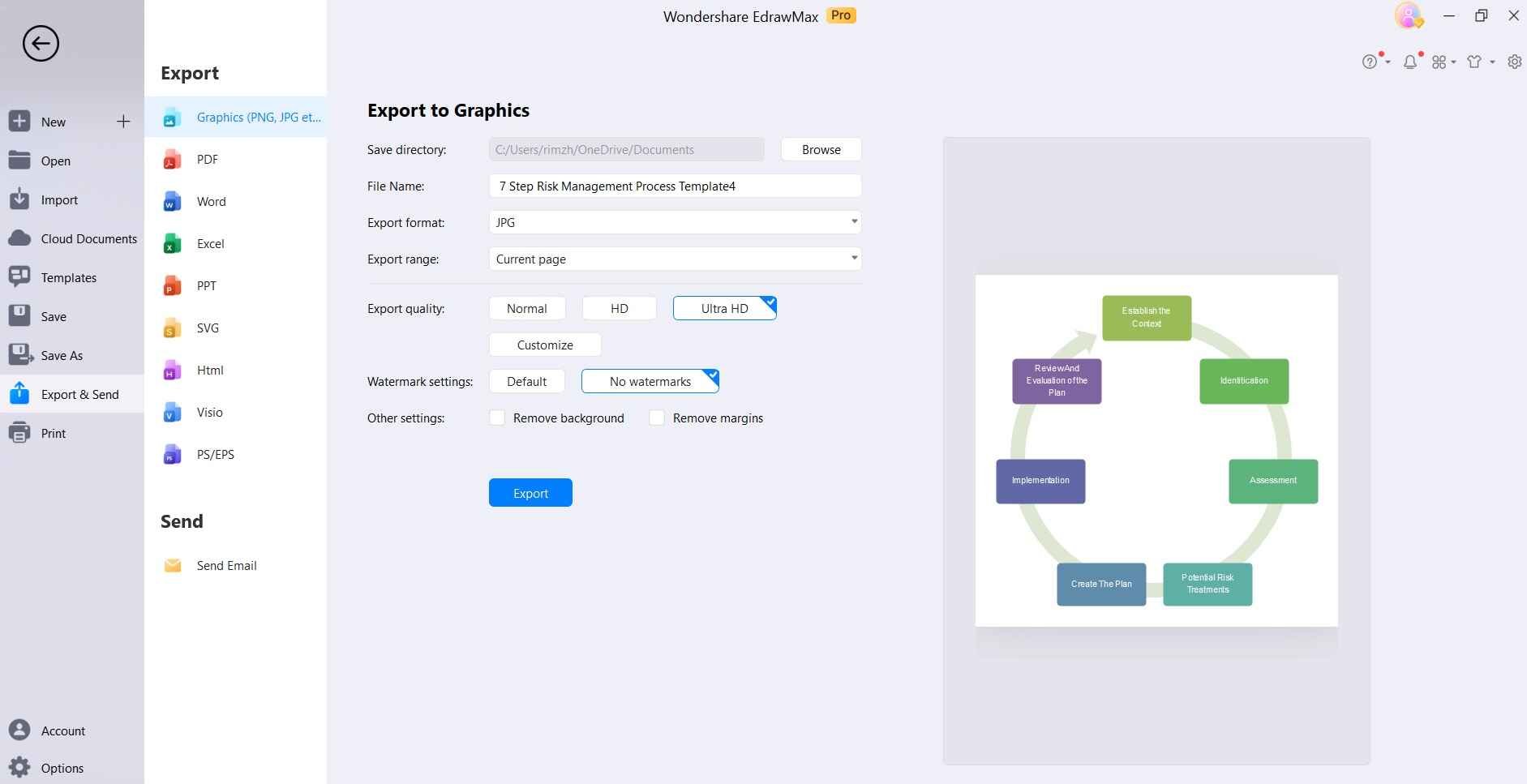
By following these steps, you'll be able to create a simple yet effective risk management diagram using EdrawMax templates. Remember, the key is to tailor the diagram to your specific industry or scenario for optimal risk assessment.
Conclusion
In conclusion, crafting a well-structured risk management diagram is an essential step in safeguarding businesses from potential hazards. EdrawMax, with its intuitive interface and extensive template library, emerges as an invaluable tool in this process.
By seamlessly integrating identified risks with corresponding mitigation strategies, professionals can gain a clear visual representation of their risk management approach. This visual clarity fosters better decision-making and ensures a proactive stance in facing challenges. Using EdrawMax empowers organizations to fortify their resilience against uncertainties, ultimately contributing to sustained success and stability.

